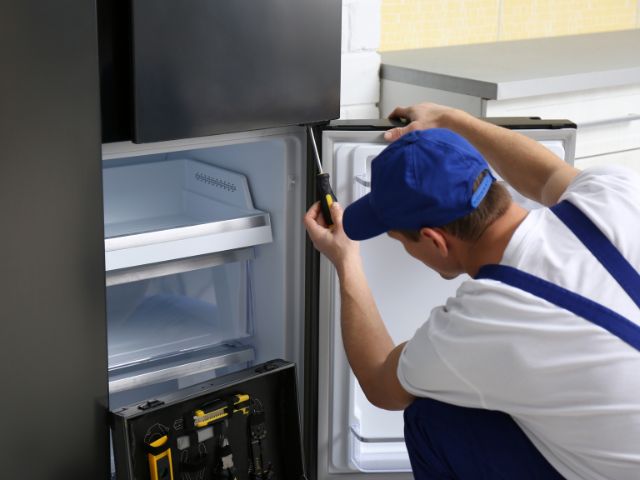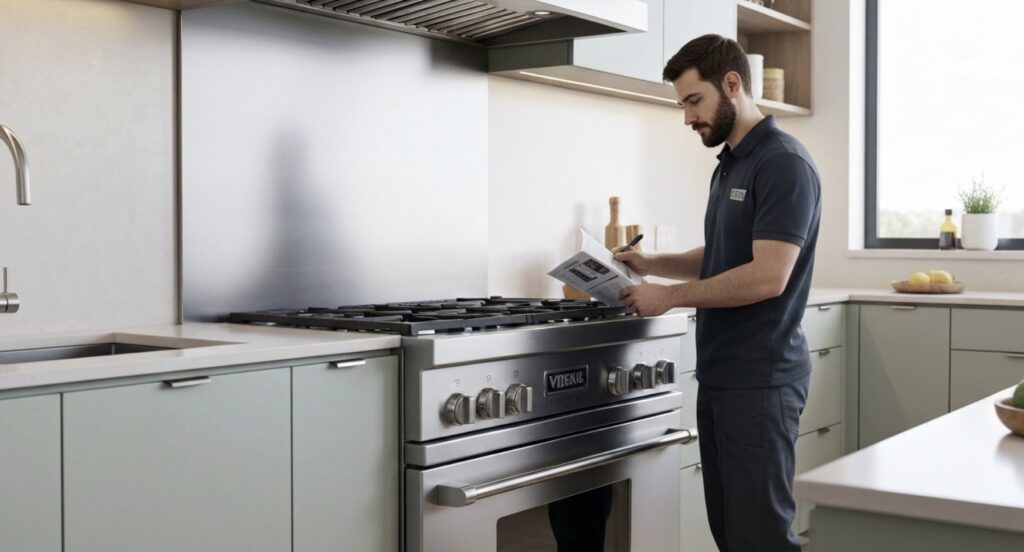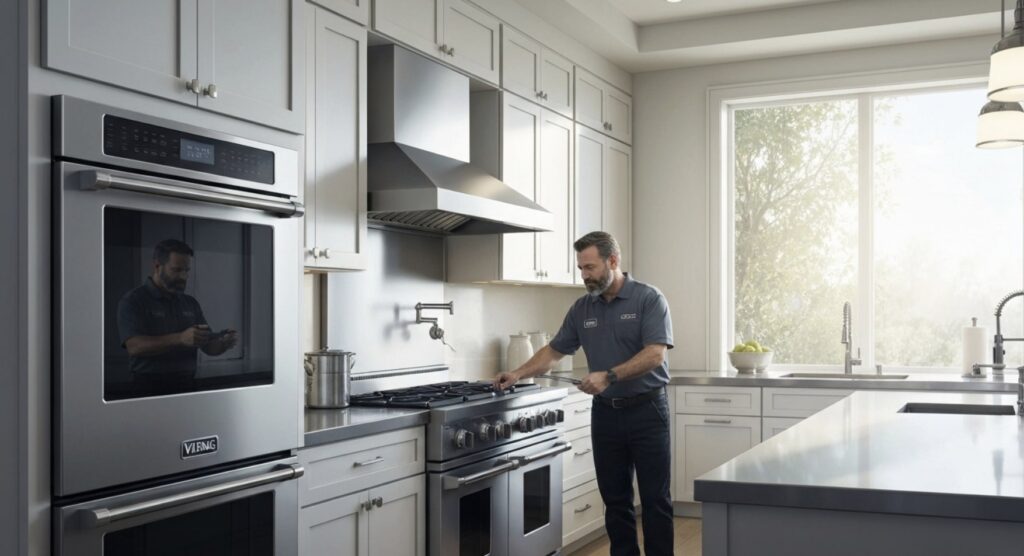Wine coolers are a cherished appliance for wine enthusiasts, providing the perfect environment to preserve delicate flavors. However, homeowners in wildfire-prone areas face a unique challenge when it comes to keeping their wine coolers running efficiently. Wine cooler temperature fluctuation repair after wildfires is a crucial task to ensure your wine collection remains safe. In this article, we will explain how wildfires can affect wine coolers, how to address temperature fluctuations, and guide you through the repair process step by step.
Understanding the Impact of Wildfires on Your Wine Cooler
Wildfires can cause significant damage, even to appliances that seem unaffected by fire. While wildfires’ flames and smoke are the most obvious hazards, temperature fluctuations due to external heat exposure can affect sensitive equipment like wine coolers. High temperatures can cause internal components of your wine cooler to overheat, leading to malfunctioning or uneven cooling.
During a wildfire, power outages are common, and this can lead to a sudden drop in the temperature, which may further disrupt the wine cooler’s functionality. If your wine cooler experiences these temperature swings, it may struggle to maintain a consistent internal temperature, leading to fluctuating temperatures that can harm your wine.
What Causes Temperature Fluctuations in Wine Coolers After Wildfires?
Several factors can contribute to wine cooler temperature fluctuations after wildfires. Here’s a breakdown of the key culprits:
- External Heat Exposure: Wildfires can raise the temperature in your home or garage, especially if your wine cooler is located in an uninsulated area. The cooler may struggle to counteract the heat, resulting in temperature fluctuations.
- Power Interruptions: A wildfire can cause power outages, leading to abrupt temperature drops. If the cooler is turned off for an extended period, the wine may experience inconsistent temperatures, potentially damaging the delicate aging process.
- Overheating of Internal Components: If the cooler is located near areas affected by fire or smoke, its internal components (like the compressor or thermostat) may overheat, disrupting its ability to maintain a steady temperature.
How to Identify Temperature Fluctuations in Your Wine Cooler
Detecting temperature fluctuations early is key to preventing damage to your wine collection. Here are some signs that your wine cooler may be experiencing temperature problems:
- Condensation or Frost: When the temperature fluctuates too much, condensation can form inside the cooler. This moisture can lead to mold growth, further compromising the quality of your wine.
- Temperature Readings Outside the Ideal Range: Wine coolers are designed to maintain a specific temperature range (typically 45–65°F). If the temperature readings consistently fall outside this range, there’s a chance the cooler is struggling to maintain stability.
- Frequent Cycling: If your wine cooler is turning on and off more often than usual, it may be a sign of temperature inconsistency caused by the effects of external heat exposure.
Steps for Repairing Wine Cooler Temperature Fluctuation After Wildfires
If you notice temperature fluctuations in your wine cooler after a wildfire, there are several steps you can take to resolve the issue.
1. Unplug the Wine Cooler and Let It Rest
- The first thing you should do is unplug your wine cooler to prevent further damage. Allow the appliance to cool down for a few hours if it has overheated. Wildfire heat exposure may cause the internal components to get too hot, and unplugging the unit allows it to rest before you perform any repairs.
2. Inspect the Power Source and Circuit Breaker
- A power outage is one of the most common causes of temperature fluctuation. Check your home’s circuit breaker to ensure the cooler is receiving power. If the breaker was tripped during the wildfire, simply reset it. If the power supply seems stable but the cooler still doesn’t turn on, there may be an internal fault in the unit’s power system.
3. Check the Temperature Settings
- If the wine cooler seems to be running but you’re still experiencing temperature instability, it’s worth checking the temperature settings. Sometimes, external heat exposure or power interruptions can lead to changes in the cooler’s settings. Ensure that the thermostat is set to the proper temperature (45–65°F) for wine storage.
4. Examine the Compressor and Condenser Coils
- The compressor and condenser coils are vital components of the wine cooler’s cooling system. High temperatures from wildfires may have caused these components to overheat or become clogged with dust and debris. Inspect the coils and clean them thoroughly. If the compressor seems damaged or malfunctioning, it may need to be replaced.
5. Check for Refrigerant Leaks
- Refrigerant leaks can contribute to temperature fluctuations. If your wine cooler isn’t cooling properly, it could be due to a refrigerant leak caused by the stress from external heat. Contact a professional appliance repair technician to assess and fix the issue if you suspect a refrigerant leak.
6. Inspect the Door Seals
- Sometimes, temperature fluctuations are caused by a poor seal around the door of the wine cooler. Check the door seals for any cracks or gaps that might be letting warm air in. If the seals are damaged, they should be replaced to prevent further temperature fluctuations.
7. Restore the Power and Monitor the Cooler
- After performing the above checks, plug the cooler back in and monitor its performance over the next few days. Ensure that the temperature remains stable and that the cooler is cycling properly. If issues persist, it’s best to contact a professional repair technician for further inspection.
Wine Cooler Temperature Fluctuation Repair After Wildfires: Why You Should Call a Professional
While some minor repairs can be done by homeowners, dealing with wine cooler temperature fluctuation after wildfires is often best left to professionals. Certified appliance repair technicians have the knowledge and expertise to diagnose complex problems and fix them quickly. They can identify hidden issues, like refrigerant leaks or compressor damage, that could lead to further damage down the line.
Viking Appliance Repair Pros specializes in wine cooler repairs, and our experts are ready to assist homeowners in wildfire-affected areas. Don’t risk the quality of your wine collection—contact us for a professional inspection and repair service.
Wrap-Up
Dealing with wine cooler temperature fluctuation repair after wildfires is essential to protect your valuable wine collection. By following the steps outlined above, homeowners can address minor issues independently, but for more serious problems, professional repair is crucial. Protect your investment and ensure that your wine stays at the perfect temperature—because your wine deserves it.
For assistance, call Viking Appliance Repair Pros for expert repair services, and we’ll get your wine cooler back to working like new.
FAQs
- How do I know if my wine cooler is damaged after a wildfire? Look for signs of condensation, temperature readings outside the ideal range, or frequent cycling. These could be signs of damage caused by heat exposure.
- Can I fix the temperature fluctuation on my wine cooler myself? Minor issues like cleaning the condenser coils and checking the thermostat can be done by homeowners, but major repairs like refrigerant leaks should be handled by a professional.
- How do wildfires affect the internal components of my wine cooler? The heat from wildfires can cause components like the compressor and thermostat to overheat, leading to cooling problems or even complete failure.
- What’s the ideal temperature range for storing wine? The ideal temperature range for wine storage is between 45°F and 65°F. Keeping your wine cooler within this range is essential for preserving the quality of your wine.
For more tips on keeping your other appliances in top condition, check out our previous blog on How to Clean Cooktops and Rangetops After Wildfires.






